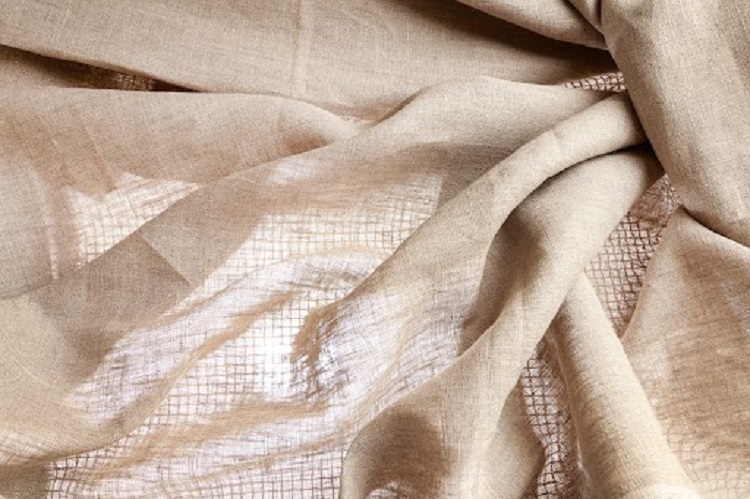Linen apparel is constantly in style, so investing in a superb linen piece today will provide good cost-per-wear value because it will last for years. Regardless of changes in shape, cut, length, or colour, linen cloth remains appealing. You can future-proof your wardrobe while also feeling ready for the new season by choosing classic styles in this timeless fabric. Linen fabric is often a low-thread-count even-weave material, but it can also be knit. In the fibre refinement process, the linen edit has a natural slub variety, giving the fabric a traditional textured aspect. Linen is infamous for wrinkling, so be prepared with iron or accept the inevitable.
Table of Contents
What exactly is linen?
Linen is a flax-based renewable material that lasts forever. The greatest flax market in Europe, particularly Belgium, where its climate and soil conditions are excellent for growing powerful, attractive linen. Belgian linen requires advanced threads in its sheets.
Composition of Linen
- Flax fibres are used to make linen, which is a sustainable fabric.
- For almost 6,000 years, the flax plant has been farmed in almost every country on the planet and used to manufacture fibre.
- The plants are either cut or removed from the ground by hand to obtain the fibres.
- The seeds are subsequently removed in a process known as winnowing or ripping, and the plant stock is separated from the fibres via retting.
- After the fibres are separated and the longest pieces, which can be up to 20 centimetres long, are collected, they are spun into yarn and subsequently sewn into the fabric.
Why are linen products such a good and well-known material?
We all know how vital it is to properly care for linen items. That does not, however, imply that it requires special treatment.
Linen fabric can be machine washed; all that is required is cold water and the avoidance of bleach or detergents containing optical whiteners, which tend to weaken the fibre. You can either tumble dry or hang your linen clothing to dry naturally.
Another advantage of linen clothing is that it does not require ironing to appear decent. High-quality linen is wrinkly, and those wrinkles are part of its charm; the effortless grace that linen apparel achieves is rarely found in other fabrics. Wrinkly cotton or silk will appear unkempt, whereas linen cloth will shine brightly.
What makes linen a good material for cushions?
Flax is a more sustainable option than cotton or polyester since it requires fewer resources to produce and is naturally biodegradable. Flax fibres of good quality are sturdy and long-lasting, making them an excellent choice for a high-wear piece of furniture like a couch or chair.
Versatility
Linen is utilized in a wide range of applications, with its durability making it perfect for upholstery and industrial products. Curtains, tablecloths, bedsheets, and tea towels are all examples of household linens.
Linen Cushions, Linen Cushion Covers, Linen Napkins, Linen Pillows, Linen Table Napkins, Linen Table Runners, and Sets of linen napkins are all available at reasonable costs at the linen edit.
Linen has also been used as a canvas for oil paintings, as well as by artisan bakers and even as a component of the American dollar bill. Linen, on the other hand, maybe woven into a light, breezy finish, making it perfect for your summer clothing.
How beneficial are linens
The wrinkled nature of linen is well-known. If you prefer the look and feel of linen clothing, be prepared to iron a lot if you want to avoid creases, unless you want to embrace the wrinkles for a more relaxed look. Smooth and crisp results can be achieved by using a high heat iron and a small amount of spray starch, especially on collars.
But don’t be fooled: once you’ve worn your linen clothing for a while, it’ll inevitably wrinkle. If you want to avoid wrinkles entirely, choose linen blend materials, which are typically much smoother. Before wearing your linen garments, make sure they are totally dry, as wrinkles can be exacerbated while the fabric is damp.
Environmentally friendly fashion
Environmentally friendly, ethically produced and manufactured clothing is becoming more fashionable, and we hope this trend continues. Flax plant cultivation is significantly more sustainable than cotton plant agriculture, hence linen apparel necessarily comes into this category.
Flax plants are tough, can thrive in a variety of soil conditions, and require relatively little water. Furthermore, every part of the flax plant is used to make a variety of items, ranging from linen clothes to varnishes.
Linen cloth is also recyclable and biodegradable, so you won’t be contributing to the world’s rising mountains of textile waste. Fabric scraps are used to manufacture fabric samples, coasters, and other objects at the linen edit, to become zero waste.
Linen napkins are available
Linen napkins have been an integral part of a home’s table linen for ages. And for good reason: they absorb moisture quickly, are soft and pleasant to the touch, are simple to maintain, and are available in a wide range of colours and designs. Overall, using linen napkins is a more environmentally friendly option.
Linen is an excellent material for napkins since it does not shed lint. They also come in a range of colours, allowing you to match them to various occasions and seasons. Linen is one of the most absorbent textiles available, making it ideal for mopping up any spills.
Conclusion
The Linen Edit sells a large range of linen items and uses them for various domestic purposes. Linen is regarded for being the world’s strongest natural fibre. It is 30% thicker and stronger than cotton, making it extremely durable and contributing to the longevity of linen items.




